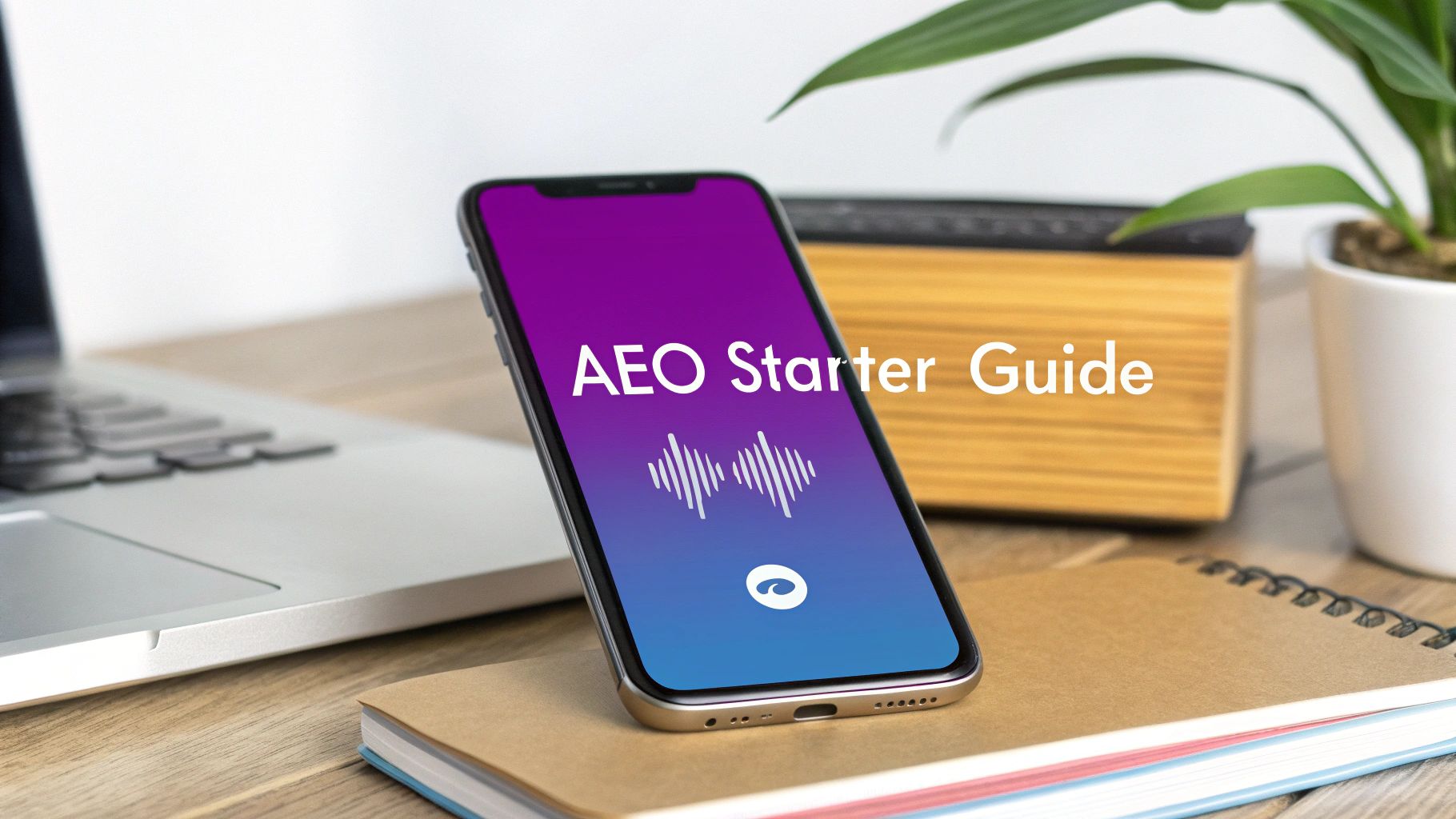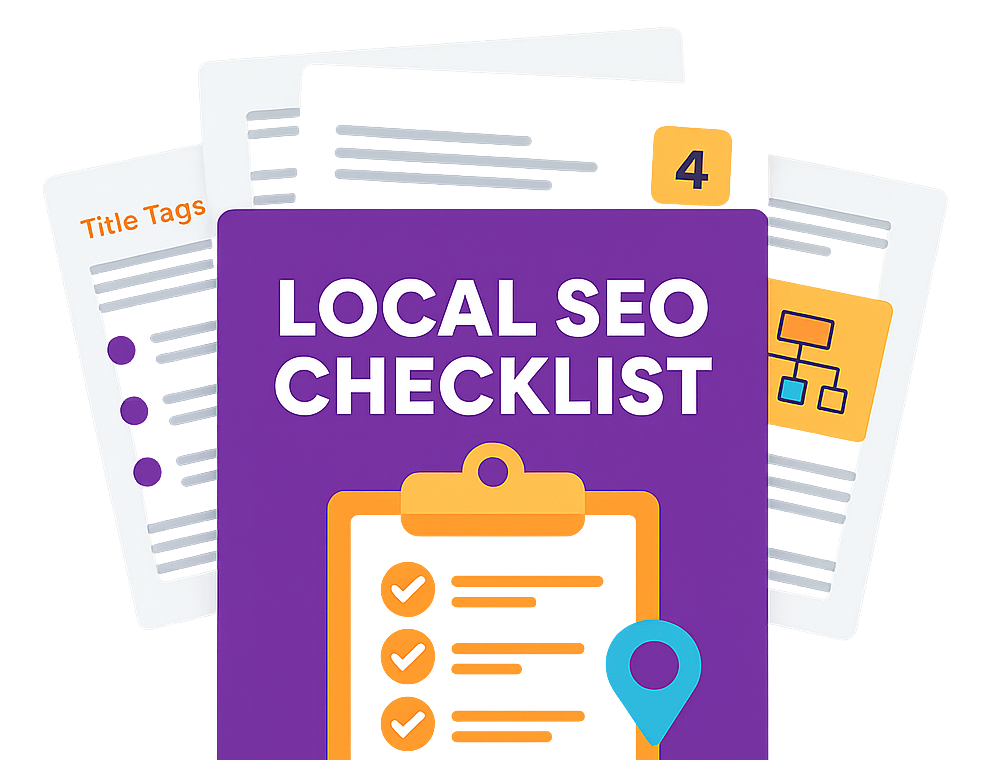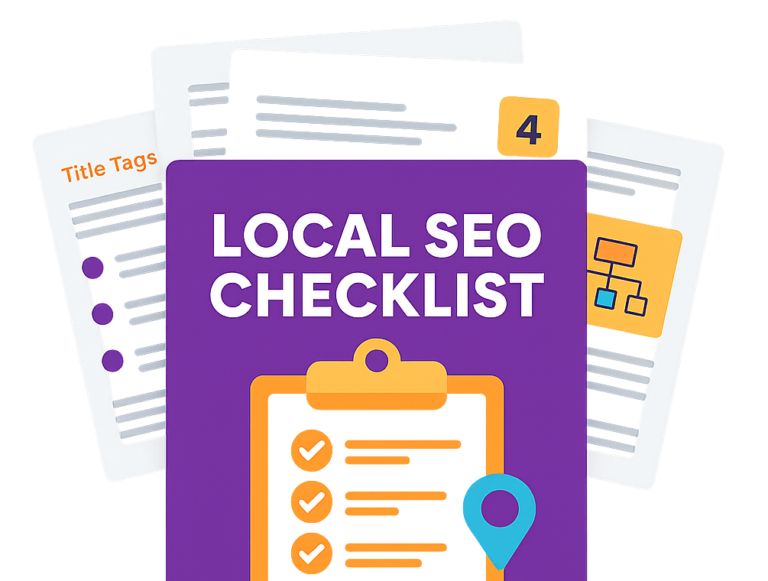The way we search for information is changing. We're no longer satisfied with a simple list of links. Instead, we expect direct answers from the likes of Google Assistant, Alexa, and Siri. This is where Answer Engine Optimisation (AEO) comes in—it’s the art and science of shaping your content so search engines can serve it up as a single, clear answer to someone's question.
Welcome to the Age of Answers
Think of traditional Search Engine Optimisation (SEO) as being handed a library card and a map of the building. You're pointed in the right direction, but you still have to find the book and the specific page yourself.
In contrast, AEO is like having the librarian walk you straight to the correct shelf, open the book to the right page, and read the exact answer aloud. For UK businesses, understanding this shift is crucial to staying visible in a world increasingly driven by voice search and AI.
The goal isn't just to rank highly anymore; it's to be the answer. When someone asks their smart speaker a question, you want it to be your business providing the solution. This means creating content that is clear, concise, and structured to directly address specific queries. It’s all part of the shift from query to clarity in modern search.
Understanding the Acronyms
Now, if you're in the UK, the letters 'AE' might bring something else to mind. The NHS uses A&E for its Accident & Emergency departments, which provide vital urgent care. In fact, NHS A&E departments have seen attendances exceed 20 million visits annually over the last decade, a figure that reflects both a growing population and increasing healthcare needs.
But in the world of digital marketing, AEO stands for Answer Engine Optimisation. It’s all about organising your website’s information so that "answer engines" like Google can easily pull it out and present it to users.
Just look at a modern search results page. It’s no longer a straightforward list of blue links. It’s packed with direct answers and other rich features.

This screenshot shows how features like 'People also ask' boxes and knowledge panels are now baked into the search experience. This is the move towards direct answers in action, and your business needs to adapt to claim these valuable spots.
What AEO Means for Your Content

Let's be clear: Answer Engine Optimisation (AEO) isn't here to replace all your hard work in SEO. Think of it as the next logical step—a way to fine-tune your content for an era where users want direct answers, not just a list of links. The heart of AEO is a sharp focus on giving concise, authoritative, and perfectly structured responses to the conversational questions your audience is asking.
This means shifting your mindset. You're no longer just writing content for a person to click on and read. Instead, you're creating it for a machine to understand, pull out the key information, and present it as the definitive answer. The goal is to satisfy the user's query instantly, often without them ever visiting your website.
The Core Components of AEO
To get AEO right, you have to look under the bonnet and understand the technology that drives it. It’s not just about the words you use, but how search engines interpret them. This means moving beyond simple keyword matching and truly getting to grips with the intent behind a user’s search.
A solid AEO strategy rests on three key pillars:
- Natural Language Processing (NLP): This is the magic that allows machines to understand human language, with all its quirks and context. For AEO, this means writing in a clear, conversational tone so that NLP algorithms can easily pinpoint the question and the direct answer you’re providing.
- Structured Data: This is a standardised way of labelling your content so search engines know exactly what they're looking at. Using Schema markup, you’re essentially adding helpful tags that say, "This is an FAQ," "This is a recipe," or "This is a how-to guide."
- Entity-Based Search: Google doesn't see keywords as just strings of text anymore. It understands "things"—people, places, concepts, and how they relate. This is entity-based search, and it’s all about connecting the dots to deliver more accurate and relevant answers.
AEO forces us to move beyond simply optimising for keywords and instead focus on optimising for topics and concepts. The goal is to establish your brand as an authority on a subject, making you the most trustworthy source for an answer.
Aligning Your Content with AEO
So, how do you actually do this? It starts with rethinking how you approach content creation. Instead of targeting broad keywords, your strategy should revolve around answering specific, long-tail questions. Think about the exact phrases someone would speak to their smart assistant or type into a search bar.
This means structuring your content for clarity and scannability. Use clear headings (H2s, H3s), bullet points, and short paragraphs to break down complex topics. Answer the main question directly at the start of a section, then use the rest of the space to add supporting details and context.
When you blend these principles with a solid grasp of how artificial intelligence can shape your strategy, you put your content in the prime position to become the definitive answer. To explore this further, you can learn more about how to use AI for your SEO efforts and see better results.
How AEO Compares to Traditional SEO
It’s crucial to draw a clear line between Answer Engine Optimisation (AEO) and traditional Search Engine Optimisation (SEO). While they’re deeply connected and work best together, their primary goals and tactics are worlds apart.
Think of it this way: SEO has always been about getting your webpage to the top of the search results. The mission was to hit that coveted number one spot on a list of blue links. AEO, on the other hand, has a much more specific ambition: to become the answer itself. The goal is for a snippet of your content to be pulled directly from your site and presented as the single, authoritative response. It's a subtle but powerful shift.
AEO vs Traditional SEO: A Head-to-Head Comparison
To truly grasp the differences, it helps to see their core components side-by-side. Where traditional SEO is a marathon to climb a ranked list, AEO is a sprint to provide an instant, satisfying answer.
This table breaks down the fundamental distinctions in their goals, content focus, and key tactics.
| Aspect | Traditional SEO | Answer Engine Optimisation (AEO) |
|---|---|---|
| Primary Goal | Rank as high as possible in a list of search results. | Become the single, authoritative answer in a featured snippet or voice search reply. |
| Content Focus | Comprehensive pages designed to attract clicks and drive traffic to the site. | Concise, easily digestible content structured to directly answer a specific question. |
| Key Tactics | Keyword optimisation, backlink building, general on-page technical health. | Schema markup, structured data, conversational question targeting, and "zero-click" optimisation. |
As you can see, the focus moves from attracting a click to providing a complete solution right on the results page. This difference in purpose changes everything about how you approach your content strategy.
Evolving From Keywords to Questions
This shift from keywords to questions is perhaps the biggest distinction between the two. Traditional SEO often targets shorter, broader keywords to cast a wide net and drive traffic. Success is measured in rankings, organic traffic, and click-through rates. You're trying to get someone to your site to find what they need.
AEO, however, is all about serving the user’s immediate need for a single, correct answer. The focus is on full-sentence, conversational questions—the exact kind of things people speak aloud to their smart devices. Success here means owning the answer box, which often leads to "zero-click" searches where the user gets their information without ever leaving Google.
This image breaks down some of the core elements involved in getting your content ready for this new world.

The key takeaway is that a structured, phased approach is the most effective way to align with how search engines now prefer to find and present information.
While SEO keyword research is still vital, AEO demands that you think more like your customers and anticipate the exact questions they're going to ask.
The core mission of AEO is to eliminate the user's need to click any further. It's about providing such a complete and concise answer on the search results page that your brand becomes synonymous with the solution.
This requires a completely different approach to how you create and format your content. Instead of just weaving in keywords, you must structure your content to provide direct, clear answers. This means using clean headings, short paragraphs, and formats like lists or tables that a search engine can easily pull from.
These tactics are becoming more important every day, as highlighted by the latest SEO trends for 2023, which show a clear industry-wide move towards more structured and answer-focused content. While traditional SEO builds a foundation of visibility, AEO builds a reputation for authority, one direct answer at a time.
Why Your Business Needs AEO Today

If you have an online presence, ignoring Answer Engine Optimisation (AEO) is a luxury you can no longer afford. The way your potential customers search for information has fundamentally shifted. With the explosion of voice search and smart devices, people aren't just typing in keywords anymore—they're asking full, conversational questions.
When someone asks, "Alexa, where can I find the best coffee in Cambridge?" or "Hey Google, how do you fix a dripping tap?", they expect a single, direct answer. Your business needs to be the one providing it. An AEO strategy is your ticket to becoming that authoritative voice.
Winning in a Zero-Click World
We're seeing a massive change in user behaviour: the rise of ‘zero-click searches’. These are queries where the user gets their answer right on the search results page from a featured snippet, knowledge panel, or AI overview. They find what they need without ever clicking through to a website.
This might sound like a problem, but it's actually an opportunity. AEO gives you the tools to succeed in this new environment. By structuring your content to deliver clear, concise answers, you can claim these valuable top spots for yourself.
Securing a featured snippet or a voice search answer does more than just drive traffic. It’s a direct endorsement from the search engine itself, building immense brand authority and positioning your business as the go-to expert.
The Tangible Business Benefits
The perks of AEO go far beyond just being seen. It's about connecting with high-intent customers at the very moment they have a problem to solve. Someone asking a specific, solution-focused question is often ready to buy a product or hire a service.
Think about these concrete advantages:
- Enhanced Brand Authority: Becoming the source of the answer builds trust and establishes your business as a leader in your field.
- Increased Visibility: You show up in coveted positions above the traditional search results, including on voice assistants like Alexa and Google Assistant.
- Capturing High-Intent Traffic: You connect with users who have a specific need, which translates into higher-quality leads and more conversions.
Embracing AEO today is about future-proofing your digital marketing. It ensures you stay relevant and accessible as search technology continues to evolve, keeping you right at the centre of customer conversations. It’s a direct investment in the long-term health of your online business.
Right, let's move from the high-level theory to the practical steps that actually get results. For UK businesses, putting Answer Engine Optimisation (AEO) into practice doesn't have to be some monumental, costly project. It's really about taking clear, manageable actions that align your website with how modern search engines think and, more importantly, how your customers behave.
This guide breaks it all down into five core steps you can start working on today. By focusing on these areas, you can kickstart your AEO journey and begin cementing your brand as the go-to source for answers in your field.
Step 1: Find Out What Your Audience Is Really Asking
The entire foundation of a solid AEO strategy is knowing the exact questions your customers are asking. Forget generic keywords for a minute and think in full, conversational sentences. What would someone actually say to their smart speaker or type into Google when they need your help?
You can uncover these questions in a few clever ways:
- Dig into 'People Also Ask': When you search for your main topics, Google's "People Also Ask" boxes are an absolute goldmine of related queries.
- Talk to Your Team: Your customer service and sales teams are on the front line. They hear your customers' questions, frustrations, and needs every single day.
- Use Free Tools: Websites like AnswerThePublic are brilliant for visualising all the questions people are asking around a specific keyword, often giving you hundreds of content ideas.
Step 2: Structure Your Content for Absolute Clarity
Once you know the questions, you need to structure your content to answer them clearly and directly. Search engines love well-organised content that's easy for both humans and their own bots to scan and understand.
The golden rule here is to answer the question concisely right at the start, and then elaborate with the finer details. This "inverted pyramid" approach is perfect for AEO, as it lets search engines easily grab that initial short answer for things like featured snippets.
Getting this right is all about simple formatting:
- Use clear, descriptive headings (H2s and H3s) for every question or sub-topic.
- Break up intimidating walls of text into short, easy-to-read paragraphs of just one to three sentences.
- Use bullet points and numbered lists to present information in a way that’s easy to digest.
Step 3: Put Structured Data to Work
Think of structured data, especially Schema markup, as putting helpful labels on your content for search engines. It gives them vital context, telling them precisely what your information is about, not just what it says. To really nail AEO, using technologies like AI workflow automation tools can be a massive help in managing these more technical moving parts.
For AEO, two types of Schema are particularly powerful:
- FAQPage Schema: This is what you use on pages that answer a list of frequently asked questions.
- HowTo Schema: Perfect for any step-by-step guides or instructional content you create.
Using Schema essentially tells search engines, "Hey, this content is a direct answer to a question," which seriously increases your chances of appearing in those rich, eye-catching search results. If you want to go deeper on this, you can read more about why Schema markup is so important for SEO and how it gives your visibility a real boost.
Step 4: Nail Your Mobile and Speed Optimisation
For AEO, mobile-friendliness and site speed are completely non-negotiable. So many voice searches happen on mobile phones, which means your site absolutely must deliver a slick, flawless experience on smaller screens. A slow, clunky mobile site is one of the biggest roadblocks you can have.
Page speed is also a confirmed ranking factor. It's simple: search engines want to give their users a good experience, and that means sending them to pages that load quickly. Use tools like Google's PageSpeed Insights to see how you're doing and get clear recommendations for improvement.
Step 5: Supercharge Your Google Business Profile
Finally, for any UK business with a physical shop or a local service area, your Google Business Profile (GBP) is an incredibly powerful AEO tool. You need to optimise it properly. Make sure every single detail is accurate, add high-quality photos, and actively encourage your customers to leave reviews.
The Q&A feature on your profile is especially important. You should be monitoring it and answering any questions that pop up, providing direct, public answers that future customers will see.
Other Meanings of AE in the UK: A Quick Guide
Before we dive deeper into Answer Engine Optimisation (AEO), let's clear up some potential confusion. If you’re in the UK, you’ve probably seen the acronym 'AE' used in a few different ways. Understanding these distinctions is key, so you know exactly what you’re dealing with, whether it’s digital marketing, pensions, or healthcare.
Think of this as a quick field guide to the term 'AE'. Getting this straight helps avoid mix-ups and makes sure we're all on the same page.
Automatic Enrolment for Pensions
One of the most common uses of 'AE' you'll find is for Automatic Enrolment, a huge government initiative for workplace pensions. Kicked off in 2012, this policy made it mandatory for employers to sign up their eligible staff for a pension scheme automatically. The goal was simple but ambitious: get more people saving for retirement.
And it worked. The policy made a massive difference, with yearly pension contributions from private sector employees jumping from £41.5 billion in 2012 to £62.3 billion in 2021. That's a 50% increase in less than ten years. You can dig into the official numbers on the government's page covering ten years of Automatic Enrolment statistics.
Accident & Emergency (A&E)
Another familiar one is A&E, which stands for Accident & Emergency. This is the NHS term for hospital departments that handle urgent care for serious injuries and life-threatening conditions. It’s a vital part of the UK’s healthcare system that everyone hopes they don’t need but is grateful to have.
So, while AEO is about boosting your digital presence, remember that AE and A&E have their own critical roles elsewhere in UK life. Now, let’s get back to the one that gets you found online.
Your AEO Questions Answered
As you start getting to grips with Answer Engine Optimisation, a few practical questions are bound to pop up. Let's tackle some of the most common ones to give you a clear path forward.
A frequent query is, "How long does it take to see results from AEO?" Unlike some quick digital marketing wins, AEO is a long-term strategy. You might see some initial movement with featured snippets within a few months, but building the kind of authority needed to consistently own the answer can take anywhere from six months to a year of dedicated effort.
Can a Small Business Compete?
Absolutely. In fact, small businesses often have an edge here. AEO thrives on niche expertise and authentic, high-quality content—something smaller, focused companies can often produce far more effectively than large, generic brands. Your deep understanding of your specific customers and their questions is your greatest asset.
A small local bakery, for instance, has a much more realistic shot at owning the answer for "best sourdough bread in Cambridge" than a national supermarket chain ever will. This targeted approach is the heart and soul of effective AEO.
The single most important part of AEO isn't one tactic, but a powerful combination. It's the fusion of high-quality, expertly written content that directly answers user questions, supported by flawless technical optimisation like Schema markup and fast page speeds.
This dual focus on both content quality and technical health is what truly signals to search engines that you are the most reliable source for an answer. By addressing the specific needs of your audience with clear, structured information, you create a powerful case for your content to be featured.
To dive deeper into the specifics of this strategy, you can explore our complete guide to Answer Engine Optimisation for more detailed insights.
Ready to become the go-to answer in your industry? Bare Digital offers a free SEO Health Check to show you exactly where to start. Get your tailored activity plan and see how we can boost your visibility and drive real results. Get your free audit today!








